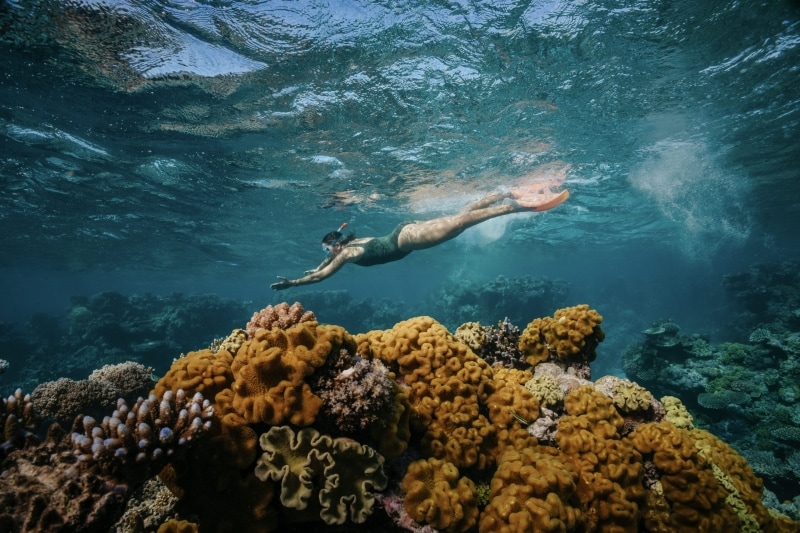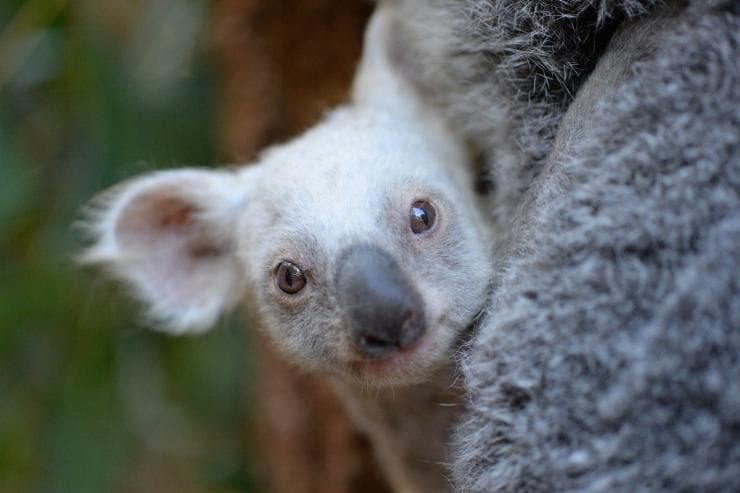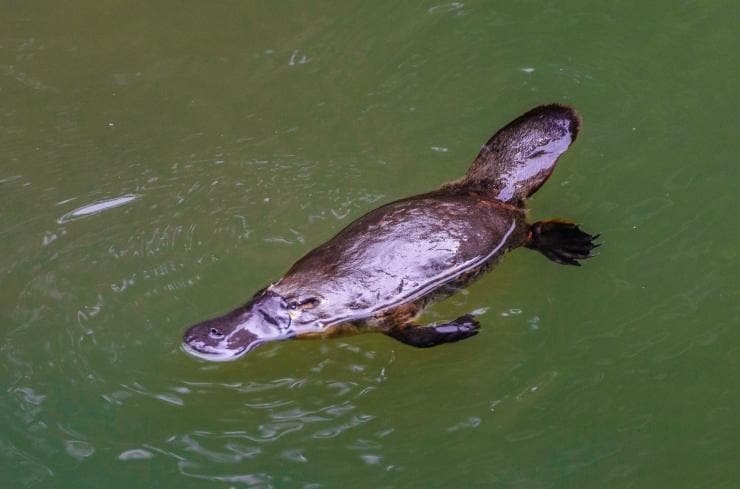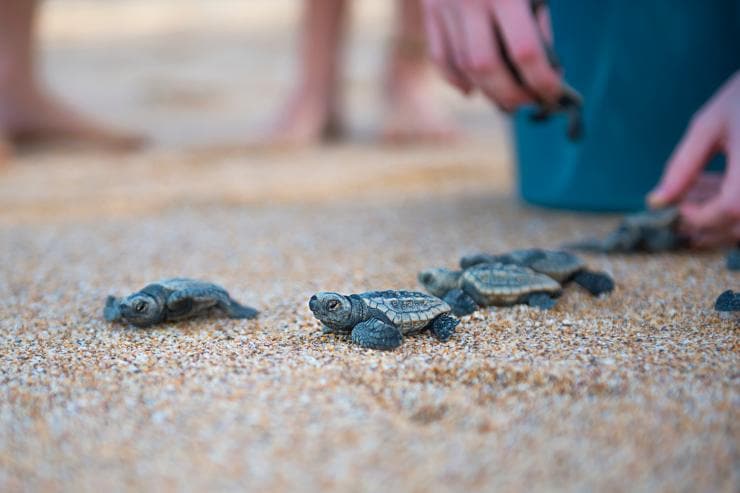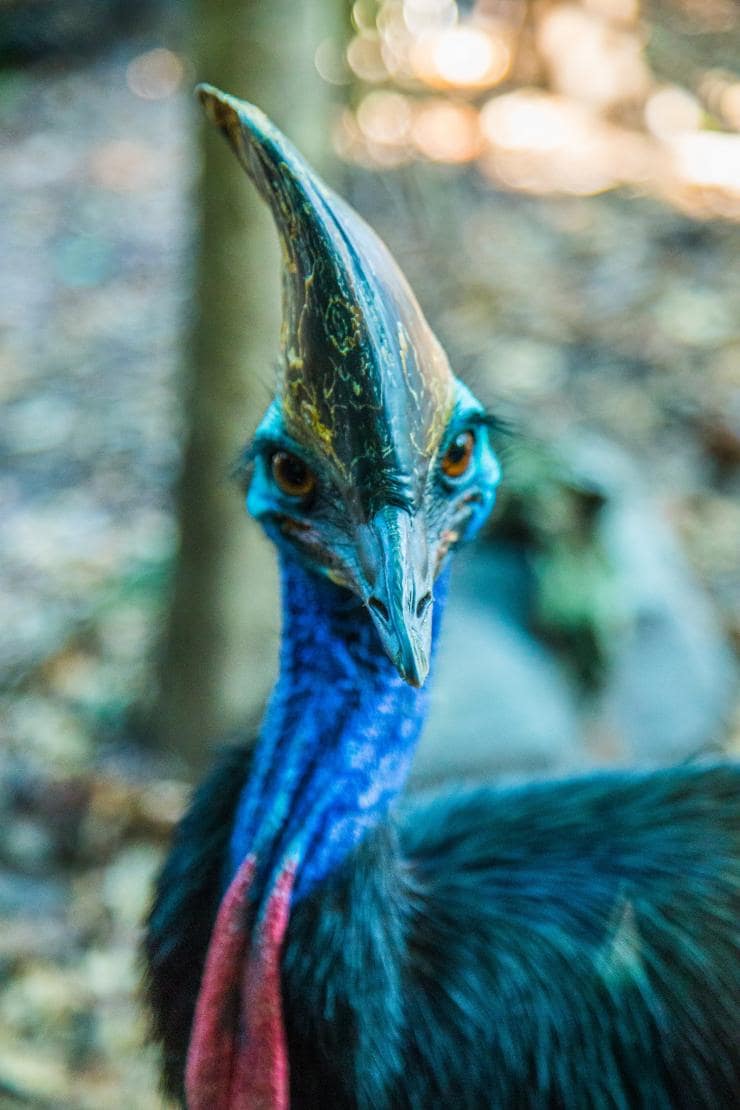
Yellow Water, Kakadu National Park, Northern Territory © Gary Topic
8 wildlife events to catch in spring
Where to see Australia’s greatest wildlife events in September, October and November.
Spring in Australia is about so much more than sunshine and wildflowers in bloom. The months of September, October and November are also some of the most exciting on the wildlife calendar. Many animals have their young at this time of year, and you can be fortunate enough to see baby whales, koalas and kangaroos. The platypuses are frisky and the birds are gathering in great numbers. It’s the greatest wildlife show around.
See baby koalas and boxing kangaroos
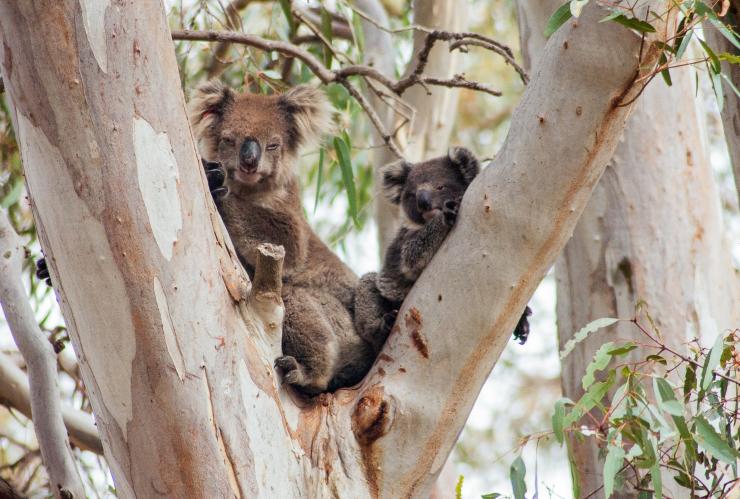
Koalas, Kangaroo Island, South Australia © Exceptional Kangaroo Island
When: September and October
Where: Kangaroo Island, South Australia
All baby animals are adorable, but a baby koala clinging to its mother’s back is cuteness overload. The babies of kangaroos, wallabies and koalas are all called joeys, and if you head to Kangaroo Island – a 30-minute flight from Adelaide, or catch the car ferry from Cape Jervis – in spring, you’ve got a very high chance of seeing all three. Look closely and you’ll often see a wallaby or kangaroo joey’s face peeking out of the pouch – just try not to laugh too hard as you watch the ungainly way they climb in and out. Springtime is also when you’re most likely to see older kangaroos “box” as they compete with other males at breeding time.
How: Spot joeys on an Intrepid Kangaroo Island tour.
Watch a platypus come out to play

Wingecarribee River, Southern Highlands, New South Wales © Destination NSW
When: September
Where: Southern Highlands, New South Wales
September is breeding season for one of Australia’s most delightfully weird animals, the platypus – so unusual that scientists thought the first specimen was a hoax. This elusive monotreme (egg-laying mammal) that lives in riverbank burrows has the tail of a beaver, the webbed feet and bill of a duck, and the body of an otter. They are at their most active during spring, and the waterways of the Southern Highlands offer a great chance to spot one of nature’s most bizarre creatures, less than a two-hour drive from Sydney.
How: Join a platypus tour.
Swim with baby humpback whales

Humpback Whales, Ningaloo Marine Park, Western Australia © Exmouth Dive and Whalesharks Ningaloo
When: September
Where: Ningaloo Reef, Western Australia
Getting up close and personal to a humpback whale in the wild is a pretty special thing, but seeing a whale with her calf takes it to an entirely different level. Every year around 40,000 humpbacks journey along the Western Australian coastline on their annual migration from the icy Antarctic to their breeding grounds in the warmer waters of the Kimberley. By September, they are heading south again, with their newborn calves. Ningaloo Marine Park, off the coast of Exmouth and Coral Bay (a two-hour flight from Perth), is the only place in Western Australia where you can swim with these majestic creatures. If you listen closely you may even hear the males sing their courtship song.
How: Jump on board with Live Ningaloo to swim with humpback whales.
Read next
8 wildlife events to catch in summer
Spot a shy southern cassowary

Southern Cassowary, Daintree National Park, Queensland © FNQ Nature Tours
When: September and October
Where: Cairns and the Great Barrier Reef Region
If you thought a two-metre-high (6.5 feet) bird that weighs almost as much as a grown man would be easy to spot, think again. The southern cassowary may be the world’s third largest and second heaviest bird, but it’s also very shy. Native to northern Queensland, the best place to see these big birds that look a little like an emu, but with a bright blue head and a brilliant red throat wattle, is in the rainforests around Mission Beach (a two-hour drive south of Cairns) and in the Daintree (two hours’ drive north of Cairns). They nest in September, and the chicks hatch in October, so you may even get to see a male with his chicks;
How: Join a tour for your best chance of a sighting.
See the sky fill with a thousand birds

Comb-crested Jacana, Kakadu National Park, Northern Territory © Lords Kakadu & Arnhemland Safaris
When: September and October
Where: Kakadu National Park, Northern Territory
The birdwatching in Kakadu, a three-hour drive east of Darwin, is always amazing, but in September and October it really ramps up. This is the season of hot dry weather that the Bininj/Mungguy people of Kakadu call Kurrung, when the billabongs and wetlands are drying out, and the wildlife, particularly the birds, congregate at the shrinking waterholes in massive numbers. It’s a fantastic time to see azure, sacred, and little kingfishers, along with the ibis, black-necked stork (jabiru), plumed whistling-duck, heron and comb-crested jacana – nicknamed the “Jesus bird” for their ability to walk on water, hopping between water lilies.
How: Plan your Kakadu birding trip.
Answer the call of the lyrebird

Superb Lyrebird, East Gippsland, Victoria © Echidna Walkabout
When: September and October
Where: East Gippsland, Victoria
You’ll probably hear the song of the superb lyrebird long before you see it in the lush forests of East Gippsland (a four-hour drive from Melbourne) but you may not believe your ears. One of Australia’s most distinctive birds – they are famous for their beautiful plumes of curving tailfeathers – lyrebirds are great mimics, and even though they sing for up to six hours a day during the breeding season, they are usually singing the song of other native birds like kookaburras or magpies. Or, they could be barking like a dog, or even screaming like a car alarm.
How: Learn more about these astonishing birds on a guided tour.
See southern right whales and their calves

Southern right whales, Dunsborough, Western Australia © Tourism Australia
When: September, October and November
Where: Dunsborough, Western Australia
Spring is the perfect time to get a close-up view of southern right whales and their calves as they head south along the coast of Western Australia. Keeping close to the sheltered shore to protect their young, the whales often rest in bays such as Geographe Bay, near Dunsborough, around a three-hour drive south of Perth. At this time of year you’ve also got a good chance of seeing the pygmy blue whale, which can grow to 24 metres (almost 79 feet) and weigh more than 90 tonnes.
How: Take a whale watching tour in Dunsborough.
Watch an adorable penguin parade
When: October and November
Where: Tasmania
There are no prizes for guessing how the little penguin got its name – standing just 33 centimetres (13 inches) tall, it’s the smallest penguin species in the world. Sometimes called fairy penguins, they might be small, but they are big on cuteness, and it’s impossible not to smile as you watch them waddle along a beach on their way back to their nest after a day spent hunting out at sea. Chicks hatch in June, but don’t head out to sea until summer, so late spring is the best time to see them in the nest. Look for them on the island’s east coast at Bicheno, and Bruny Island, and also near Burnie, Devonport, George Town, and of course, at the town of Penguin on the north-west coast.
How: Spot penguins on a Tasmanian wildlife tour.

